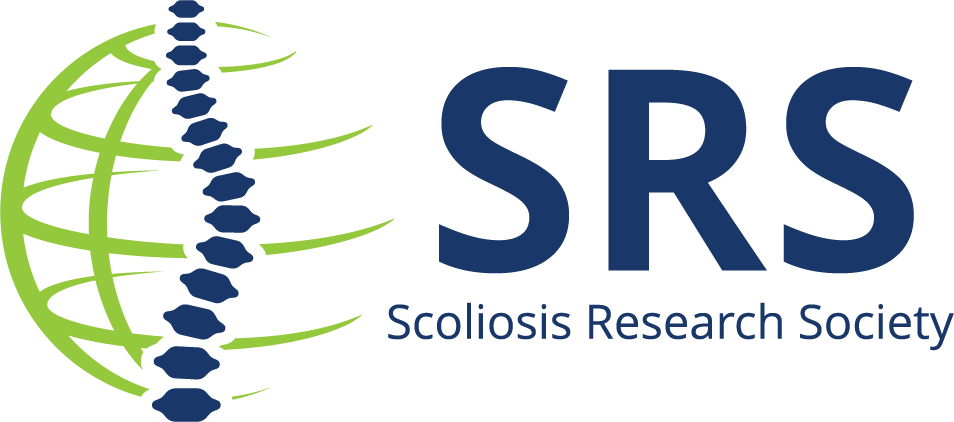Spine Deformity Journal
About Spine Deformity Journal
Spine Deformity is a peer-reviewed journal devoted to disseminating knowledge on the etiology, biomechanics, treatment methods, and outcomes of all types of spinal deformities. The official journal of the Scoliosis Research Society, it aims to foster the optimal care of all patients with spine deformities worldwide. The international Editorial Board is committed to publishing original articles in the form of clinical and basic research while ensuring a global perspective.
Spine Deformity Journal is only available to SRS members.
Journal Impact Factor
The Scoliosis Research Society is pleased to announce their key academic journal, Spine Deformity, continues to grow in prestige and reach. SRS journal publisher Springer Nature, announced our Journal Impact Factor for 2024 increased to 1.8, up from 2023’s 1.6.
According to Clairivate, “The Journal Impact Factor (JIF) is a ratio which divides a journal’s received citations by a count of its published articles. The Impact Factor evaluates journals with a multidimensional view of a journal’s impact and influence.”
Elite Reviewers
Spine Deformity would like to extend our deep appreciation to Elite Reviewers. An Elite Reviewer meets the criteria of:
- Having reviewed 5 or more manuscripts
- Average review time of 7 days or less
- Average response time to review invitation of 3 days or less
- Fewer than 30% automatic un-invite from review
Reviewers meeting this criteria in 2025 includes:
- Stephen A. Albanese, MD*
- John M. Caridi, MD*
- Matthew E. Cunningham, MD, PhD
- Nicholas D. Fletcher, MD*
- Robert Gaines Jr., MD*
- A. Noelle Larson, MD
- Juan P. Sardi, MD
- Freyr G. Sigmundsson, MD, PhD
- Adam Wolwick, MD
- ZeZhang Zhu, MD, PhD
*Also Elite Reviewer in 2024
Douglas Burton, MD, Award for the Best Adult Deformity Article in the Spine Deformity Journal
During the 58th SRS Annual Meeting in Seattle, Washington USA, the Scoliosis Research Society (SRS) announced the a new award category in honor of member Douglas Burton, MD for the Best Adult Deformity Article in the Spine Deformity Journal.
Dr. Burton is an SRS Lifetime Achievement Award winner for distinguished service to the Society, as well as significant contributions to spinal deformity care. Dr. Burton has been an active fellow in the SRS since 2004 and currently serves as the Research Council Chair and member of the Executive Committee. At the SRS Annual Meeting and IMAST, he has been honored with the Hibbs, Goldstein, Moe, and Whitecloud Awards. He has authored or co-authored over 300 peer reviewed publications and serves as a Deputy Editor of Spine Deformity, the official journal of the Scoliosis Research Society.
Douglas Burton, MD, Award-Winning Articles
2025
Does an improvement in cord-level intraoperative neuromonitoring data lead to a reduced risk for postoperative neurologic deficit in spine deformity surgery?
Authors: Nathan J. Lee, Lawrence G. Lenke, Mitchell Yeary, Alexandra Dionne, Chidebelum Nnake, Michael Fields, Matthew Simhon, Ted Shi, Varun Arvind, Anastasia Ferraro, Matthew Cooney, Erik Lewerenz, Justin L. Reyes, Steven Roth, Chun Wai Hung, Justin K. Scheer, Thomas Zervos, Earl D. Thuet, Joseph M. Lombardi, Zeeshan M. Sardar, Ronald A. Lehman & Fthimnir M. Hassan
Study Design: A consecutive series of 1106 patients underwent spine surgery from 2015 to 2023 by a single surgeon. Cord alerts were defined by Somatosensory-Evoked Potentials (SSEP; warning criteria: 10% increase in latency or > 50% loss in amplitude) and Motor-Evoked Potentials (MEP; warning criteria: 75% loss in amplitude without return to acceptable limits after stimulation up 100 V above baseline level). Timing of IONM loss and recovery, interventions, and baseline/postoperative day 1 (POD1) lower extremity motor scores were analyzed.
Objective: To determine if an improvement in cord-level intraoperative neuromonitoring (IONM) data following data loss results in a reduced risk for new postoperative motor deficit in pediatric and adult spinal deformity surgery.
2024
Knee flexion compensation in postoperative adult spinal deformity patients: implications for sagittal balance and clinical outcomes
Authors: Sarthak Mohanty, Christopher Lai, Gabriella Greisberg, Fthimnir M. Hassan, Christopher Mikhail, Stephen Stephan, Joshua Bakhsheshian, Andrew Platt, Joseph M. Lombardi, Zeeshan M. Sardar, Ronald A. Lehman & Lawrence G. Lenke
Study Design: This single-center, single-surgeon retrospective study, assessed ASD patients who underwent posterior spinal fusion between 2014 and 2020.
Objective: To determine whether maintaining good sagittal balance with significant knee flexion (KF) constitutes a suboptimal outcome after adult spinal deformity (ASD) correction.
2023
Proximal junctional failure after surgical instrumentation in adult spinal deformity: biomechanical assessment of proximal instrumentation stiffness
Authors: Maeva Lopez Poncelas, Luigi La Barbera, Jeremy Rawlinson, Dennis Crandall & Carl-Eric Aubin
Study design: Assessment of different proximal instrumentation stiffness features to minimize the mechanical proximal junctional failure-related risks through computer-based biomechanical models.
Objective: To biomechanically assess variations of proximal instrumentation and loads acting on the spine and construct to minimize proximal junctional failure (PJF) risks.
